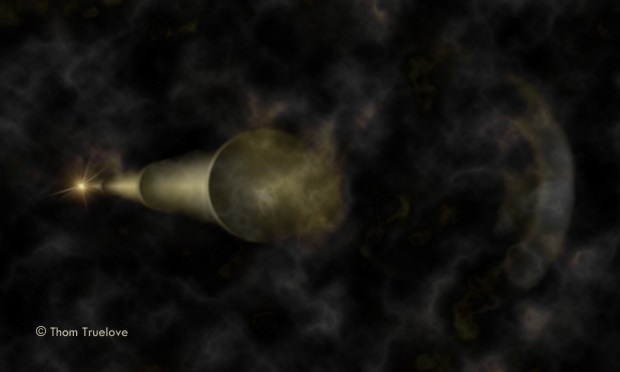A destiny in space for homo sapiens is certain – or at least I’d like to think so. What form it takes is a matter for debate. The sociopolitical part of world-building for the far future of Astral prompts questions of how humanity will change they it fits and starts toward its fate.
The backstory of space travel in Astral sees the first steps in this regard with ten colonies (between 4.39 and 19.92 light-years distant). A second tier of expansion is launched from those initial settlements and not Earth herself. By extension, through these “grandchildren” colonies, her reach grows from 11 worlds (M.other E.arth† included) to 28.

Globalization on one world may be inevitable. Stretched through interstellar space it becomes imperialism. There is a Chinese saying‡ that suggests a family’s great wealth should not be expected to last through three generations. The proverb is often used as a reminder that a meritocracy is better than honoring tradition and legacy. Some of M.E.’s grandchildren will declare independence particularly where greater prospects derive from looking forward rather than back.

After settled planets divide into factions, M.E. and her remaining loyal worlds would seek to safeguard her dominance. Laws designed to limit rival colonial “families” would be imposed. From the moment they were enacted, however, the decline of the “Solar Empire” would have begun. Tier III of expansion, during which the events of Astral take place, would bring the count to 63 worlds and the range to 39.26ʟʏ from Earth. The original homeworld would exercise control (directly or by extension) over just 52.38%. The next jump in adding new worlds would see M.E.’s control slip below the halfway point.
With a somewhat unsafe, difficult manner of faster-than-light travel and each world using genetic engineering to make up for shortfalls in terraforming, the definition of human and the proper use of homo sapiens as a description will – of necessity – change. Evolution in isolation is known to create a wide divergence of traits, ultimately leading to entirely new species.
 Another Chinese maxim equates to, “While the cat’s away the mice will play.” But it’s more poetically transliterated as, “Heaven is high and the emperor is far away.” Strange new worlds will raise new ideologies and new approaches to the economic problem. The more distant and different the world the more likely influence of any kind from M.E. will be subject to a metaphorical inverse-square law.
Another Chinese maxim equates to, “While the cat’s away the mice will play.” But it’s more poetically transliterated as, “Heaven is high and the emperor is far away.” Strange new worlds will raise new ideologies and new approaches to the economic problem. The more distant and different the world the more likely influence of any kind from M.E. will be subject to a metaphorical inverse-square law.
The culture of an extra-global humanity will grow ever more diverse. Over time, there will be a family resemblance but that will fade with M.E.’s importance. Any Terrestrial alliance will depend on keeping the extended family loyal, embracing many forms of adaptation, and implementing an active program for innovation: better genetic designs and more efficient terraforming.
Clutching to a status quo, let alone any irredentism, would require FTL capacity that was significantly better than other “humans” were using and an ability to revert to conventional warfare, an inconvenient practice between any two planets in this construct. There is in this a subtle nod toward the Earth-that-was in Joss Whedon’s Firefly/Serenity. Unlimited want and limited resources will eventually use up any world. Improvement of FTL travel may be beyond M.E.
If a human presence in space involved civil war M.E.’s side would likely be much smaller than 51 of 111 worlds in the projected Tier IV. The range in that event would probably not extend to 67.16ʟʏ. And, as it happens, we don’t have to wait hundreds of years to be concerned by hyperbolic ideology, reflexive sectarianism, or economic obsessions. There’s room for evolution there too without altering the meaning of human.
† Is this proverb used when discussing North Korean leader Kim Jong-un (김정은) or a present presidential campaign in the US?
‡ “M.other E.arth” and “M.E.” are part of the copyright of Astral (working title).
